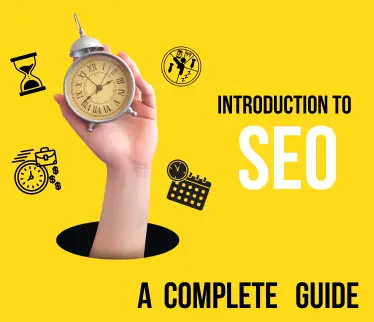
Table of Contents
Understanding the Basics of Search Engine Optimization

Search Engine Optimization (SEO) is all about making a website more visible and easier to find on search engine results pages (SERPs). This happens by using different methods and strategies to boost the quality and relevance of a site’s content. Plus, it looks at the technical parts of a website, too. The goal? To match what search engines like Google, Bing, & Yahoo want.
There are many things involved in SEO. These include keyword research, creating content, tweaking on-page elements, building links, & improving technical parts of the site. The main idea behind SEO is to bring in more organic (non-paid) visitors to a website. This traffic boosts visibility and chances for conversions.
Why Search Engine Optimization Matters in Digital Marketing
In today’s world, where people largely get info from the internet, SEO has become super important for digital marketing plans. Here’s why it’s essential:
- Increased Visibility & Traffic: SEO helps websites get higher rankings in search results. This makes them easier to find for potential visitors, leading to more organic traffic that costs less than paid ads.
- Credibility & Trust: Users usually trust search engines. They see websites that rank higher as more credible and reliable. A strong SEO plan can improve a brand’s reputation.
- Better User Experience: Optimizing aspects like website structure and speed helps enhance how users interact with your site. When a website’s easy to navigate and provides valuable info, users are happier.
- Long-Term Benefits: Unlike paid ads that stop as soon as you stop paying, good SEO has lasting effects. Once your site ranks high, it can stay there with some ongoing effort.
- Competitive Advantage: In crowded markets, solid SEO can set you apart from competitors. Being at the top of search results means attracting more customers & grabbing a bigger market share.
How Search Engines Work

Search engines like Google use complex algorithms to deliver the best results for user queries. Knowing how they work is key for effective SEO.
Crawling
This is the first step where bots called spiders scan the web for new content. They follow links from one page to another and gather info like text and images which gets added to the search engine’s index.
Indexing
After crawling comes indexing—organizing all that data into a giant database. When someone searches, the engine uses this index to find relevant pages to show users.
Ranking
This part determines how search results are listed. Factors like relevance, quality, & user experience play into ranking pages. Pages that score well on these factors tend to show up higher in results.
SEO involves both on-page & off-page techniques targeting engines better. Here are some key points:
Keyword Research
Make a list of keywords or phrases that’ll help people find info on your site when they search.
Optimization Of The Page
Title Tags: Use unique title tags for each page that includes target keywords.
Meta Descriptions: Write clear descriptions that catch user attention.
Header Tags: Use header tags (H1, H2, H3) effectively in your content.
URL Structure: Include keywords in URLs but keep them simple.
Content Optimization: Create engaging content that meets user needs while including target keywords.
Technical SEO
Make sure your site is indexed correctly. Improve loading speed. Optimize for mobile since Google uses mobile-first indexing now.
Send XML sitemaps to inform search engines about your site’s layout.
Off-Page Optimization Work:
Build quality backlinks from trusted sites for better authority.
Social Media: Leverage platforms to promote content & engage users regularly.
Online Reputation Management: Monitor & manage online reviews about your brand actively.
Local SEO: If you’re local business—make sure you’re optimized for local searches! Claim & optimize your Google My Business listing!
User Experience (UX): Keep your website looking good with an easy-to-use interface!
Page Experience: Focus on load times plus mobile-friendliness keeping browsing safety in mind.
Keyword Optimization: If you own a bakery in New York, use phrases like “best bakery in NYC” or “artisanal bread New York.” Sprinkle these keywords throughout your web content and meta tags!
Content Creation: Regularly post articles about baking or local events. It’s interesting for visitors and also gives search engines more stuff to index!
Link Building: Team up with local food bloggers or sites! When they feature you and link back—that’s quality backlinking!
Local SEO: Update all your online directory listings ensuring consistent business info like name, address & phone number—so folks can find you easily!
Technical SEO: Fix broken links on your site, add proper keywords to image alt texts too!
Types of SEO
SEO is vital for boosting how visible your site is online! Here’s some important types of SEO strategies:
White Hat SEO
This means following all guidelines while optimizing ethically! These practices prioritize giving value to users by generating high-quality content and ensuring an excellent user experience.
Black Hat SEO
Avoid this! It involves sneaky tricks that break rules just to game rankings—risking penalties or getting banned from search results!
Grey Hat SEO
These methods sit between white & black hats—it may not break rules outright but could still bring bad attention if not careful!
Key Metrics
Monitoring essential metrics can show if your strategies work! Pay attention to these:
Organic Traffic This means visitors finding you without any ads hitting their screen!
Bounce Rate: Milking out who leaves after only reading one page can tell you about user experience—or lack thereof!
Conversion Rate: See how many folks complete desired actions makes clear who’s winning clicks!
Domain Authority (DA) & Page Authority (PA): Metrics predicting how well you rank! Higher numbers mean better chances of being seen first when folks hit search!
Keyword Rankings: Tracking where you stand for specific phrases helps evaluate whether strategy changes need making!
SEO Best Practices
Using best practices keeps your site friendly for both engines and users. Some big areas include:
Quality Content: Information-rich content needs engaging material relevant enough that answers questions clearly!
User Experience (UX): Good UX needs clear navigation plus quick loads! Responsive design matters too—prospective visitors will love it!!
Mobile Optimization: With everyone using phones nowadays—you gotta have mobile-friendly stuff! That way users aren’t fussed over bad layouts or poorly formatted text!
Local SEO: It shines especially bright when businesses focus around local specifics—enhancing visibility wherever nearby people look up products/services!.
Common Mistakes
Steer clear of these common traps—doing so helps you avoid penalties plus keeps operations normal running smoothly!
Keyword Stuffing: Overloading keywords naturally causes problems while reading! Focus simply—and flow naturally while weaving those terms seamlessly into contexts!
Duplicate Content: Keep posting unique stuff too—a repetitive tone confuses normal associationleading result being diluted across searches taken hopelessly
Ignoring Mobile Users: This could lead woes again as audiences suffer grudgingly without favourable experiences provided either properly validate through usability design principles attentively applied likewise necessary
Neglecting Meta Descriptions: Meta description is very important to get clicks from search. We have to make sure that every page has unique meta description that properly reflect the content.
Poor Link Building Practices We should avoid practices like buying links from others or participating in any link scheme. Focus on high quality backlinks especially from guest posting and outreach.
The Future of SEO
The SEO landscape is continually evolving, and staying ahead of emerging trends is essential for maintaining a competitive edge.
Voice Search Optimization With the rise of voice-activated devices, optimizing for voice search is becoming increasingly important. Focus on natural language keywords and answering common questions directly.
AI and Machine Learning in Search Engine Optimization Artificial intelligence and machine learning are playing a growing role in SEO. Understanding how algorithms like Google’s RankBrain work can help you optimize your content more effectively.
Evolving Search Engine Algorithms Search engines frequently update their algorithms to improve user experience. Staying informed about these changes and adapting your strategies accordingly is crucial for maintaining and improving your rankings.
SEO for Emerging Technologies New technologies like augmented reality (AR) and virtual reality (VR) are creating new opportunities and challenges for Search Engine Optimization. Keeping an eye on these developments will help you stay prepared for future changes.
Conclusion
Recap of Key Points
Understanding the different types of SEO and key metrics is fundamental for developing effective strategies. By following best practices and avoiding common mistakes, you can enhance your website’s visibility and performance.
The Ongoing Nature of SEO
search engine optimization is not a one-time effort but an ongoing process that requires regular monitoring, updating, and optimization. Staying proactive and informed about the latest trends and best practices will help you maintain a competitive edge.
Encouragement to Stay Updated with SEO Trends
The digital landscape is constantly changing, and staying updated with the latest SEO trends and technologies is crucial. Engaging in continuous learning and adaptation will ensure your SEO strategies remain effective and aligned with search engine guidelines.

Aitizaz Rahim is a dynamic Digital Marketing and SEO expert, empowering businesses worldwide with proven strategies. As the founder of Masterblogerz, he shares actionable insights to help others master the digital marketing world.




20 Comments